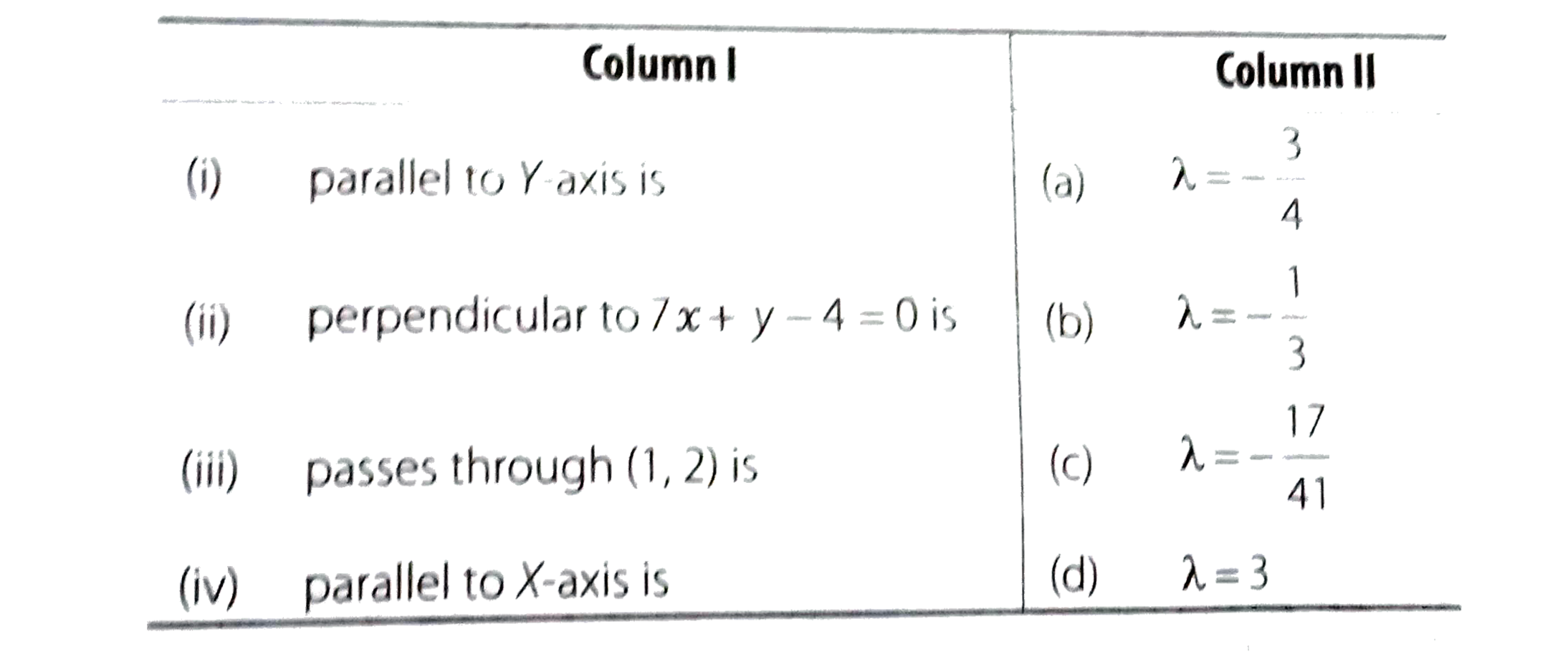The values of λ for which the function f(x)=λx3−2λx2+(λ+1)x+3λ is increasing through out number line (a)λ∈(−3,3) (b) λ∈(−3,0) (c)λ∈(0,3) (d) λ∈(1,3)
To determine the values of λ for which the function
f(x)=λx3−2λx2+(λ+1)x+3λ
is increasing throughout the number line, we need to analyze the derivative of the function.
Step 1: Find the derivative of the function
The first step is to compute the derivative f′(x):
f′(x)=ddx(λx3−2λx2+(λ+1)x+3λ)
Calculating the derivative term by term:
- The derivative of λx3 is 3λx2
- The derivative of −2λx2 is −4λx
- The derivative of (λ+1)x is λ+1
- The derivative of 3λ is 0
Thus, we have:
f′(x)=3λx2−4λx+(λ+1)
Step 2: Set the derivative greater than zero
For the function f(x) to be increasing throughout the number line, we need:
f′(x)>0
This means:
3λx2−4λx+(λ+1)>0
Step 3: Analyze the quadratic expression
The expression 3λx2−4λx+(λ+1) is a quadratic in x. For this quadratic to be positive for all x, its discriminant must be less than zero.
Step 4: Calculate the discriminant
The discriminant D of a quadratic ax2+bx+c is given by:
D=b2−4ac
In our case:
- a=3λ
- b=−4λ
- c=λ+1
Thus, the discriminant is:
D=(−4λ)2−4(3λ)(λ+1)
Calculating this gives:
D=16λ2−12λ2−12λ=4λ2−12λ
Step 5: Set the discriminant less than zero
We require:
4λ2−12λ<0
Factoring out 4λ:
4λ(λ−3)<0
Step 6: Determine the intervals for λ
To solve 4λ(λ−3)<0, we find the critical points λ=0 and λ=3. We can test intervals around these points:
1. For λ<0: 4λ<0 and λ−3<0 (product is positive)
2. For 0<λ<3: 4λ>0 and λ−3<0 (product is negative)
3. For λ>3: 4λ>0 and λ−3>0 (product is positive)
Thus, the solution to 4λ(λ−3)<0 is:
λ∈(0,3)
Final Answer
The values of λ for which the function f(x) is increasing throughout the number line is:
λ∈(0,3)
The first step is to compute the derivative f′(x):
- The derivative of −2λx2 is −4λx
- The derivative of (λ+1)x is λ+1
- The derivative of 3λ is 0
For the function f(x) to be increasing throughout the number line, we need:
The expression 3λx2−4λx+(λ+1) is a quadratic in x. For this quadratic to be positive for all x, its discriminant must be less than zero.
The discriminant D of a quadratic ax2+bx+c is given by:
- b=−4λ
- c=λ+1
We require:
To solve 4λ(λ−3)<0, we find the critical points λ=0 and λ=3. We can test intervals around these points:
2. For 0<λ<3: 4λ>0 and λ−3<0 (product is negative)
3. For λ>3: 4λ>0 and λ−3>0 (product is positive)
The values of λ for which the function f(x) is increasing throughout the number line is:
Topper's Solved these Questions
Similar Questions
The value of the λ if the lines (2x+3y+4)+λ(6x−y+12)=0 are

View SolutionFind the value of λ for which the equation λx2+4xy+y2+λx+3y+2=0 represents a pair of straight line
View SolutionThe least integral value of λ for which the expression (λx2−4x+3λ+1) is positive for all x in R,is
View SolutionFind the range of λ for which equation x3+x2−x−1−λ=0 has 3 real solution.
View SolutionThe value of λ for which the sum of squares of roots of the equation x2+(3−λ)x+2=λ is minimum, then λ is equal to (a) 2 (b) −1 (c) −3 (d) −2
View SolutionThe set of possible values of λ for which x2−(λ2−5λ+5)x+(2λ2−3λ−4)=0 has roots whose sum and product are both less than 1 is
View SolutionIf the points A(λ,2λ),B(3λ,3λ)andC(3,1) are collinear, then λ=
View SolutionFunction f(x)=cosx−2 λ x is monotonic decreasing when (a) λ>1/2 (b) λ<1/2 (c) λ<2 (d) λ>2
View Solutiontan−13+tan−1λ=tan−1{3+λ1−3λ} is valid for what values of λ ?
A) λ∈(−13,13)
B) λ>(13)
C) λ<(13)
D) all real values of λ
View SolutionThe equation
λ2x2+(λ2−5λ+4)xy+(3λ−2)y2−8x+12y−4=0 will represent a circle, if λ=
View Solution